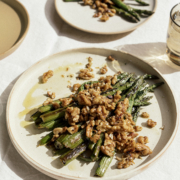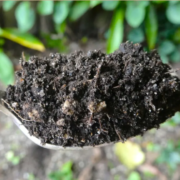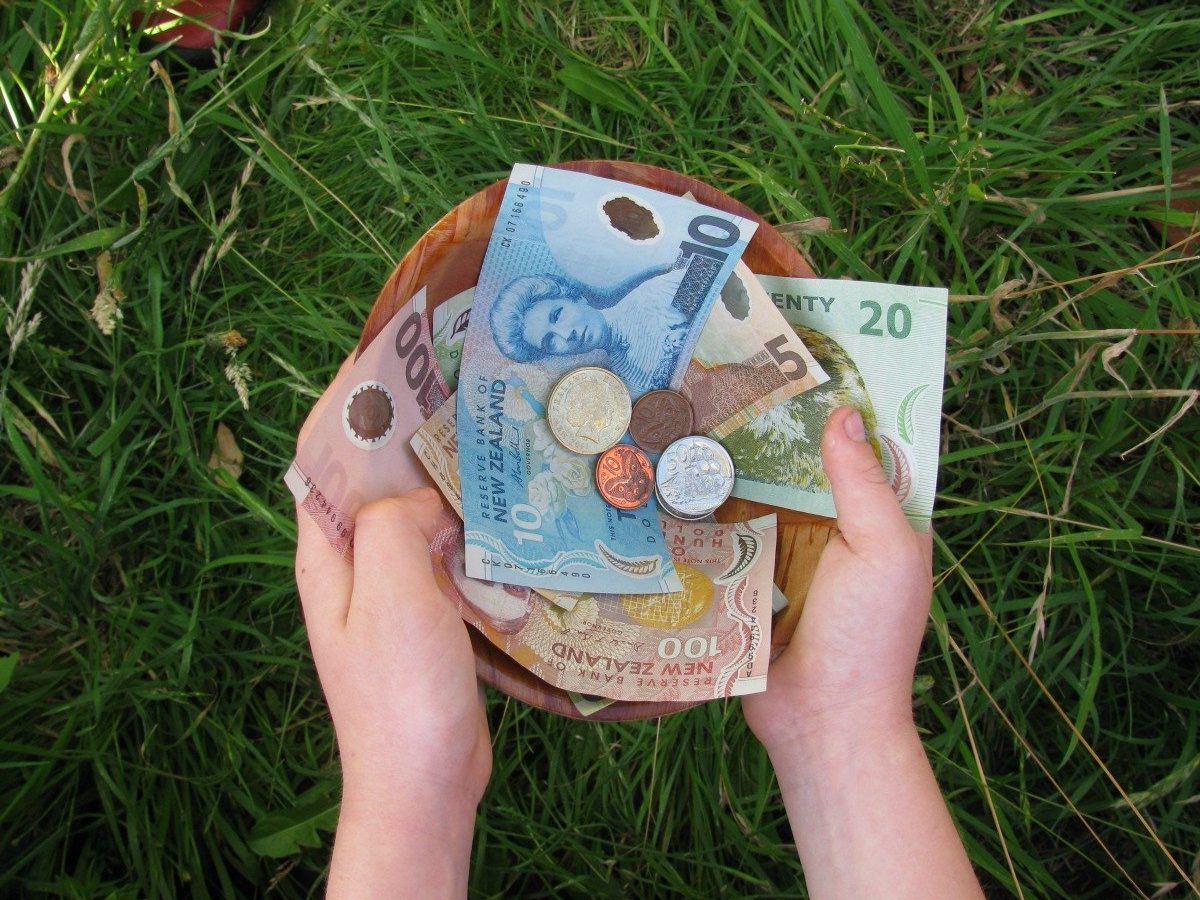Summer is here! Berry crops and other organic garden tips
Summer is such a waiting and watching period. All the hard work of spring is about to come to fruition – if we protect and nurture our precious plants and their ground crew. Diana Noonan shares her experience of growing food organically and reminds us, as we tinker in the garden, to enjoy the riot of colour all around and to marvel at how the earth, the essence of life, really can bring forth food in abundance.
We hope you enjoy this free article from OrganicNZ. Join us to access more, exclusive members-only content.
E hoa ma, ina te ora o te tangata –
My friends, this is the essence of life.
Berry blossom
Berry bushes are among the most productive food producers in the garden, with their fruit considered to be full of disease-fighting nutrients. The blossom of some of the most health-giving berries (Worcester, currants, and blueberries, for instance) is so obscure that we barely notice it. But birds are fully aware of its presence!
In spring and early summer, berry flower buds and blossom provide nutrition to birds whose other food sources, such as fruit and seeds, are not yet available. And once the blossom is eaten, there’s no hope of berries.
For the past few years, I’ve begun netting my berry bushes long before their blossom even appears, and the net stays on right through until harvest has been completed. The rewards are kilos of fruit where before there was none!
TIP: Keep a careful watch for the subtle buds and blossoms on berry bushes, and cover the plants before they even start to bloom.
Mulch in the menagerie!
Think ‘mulch’ and your mind immediately goes to weed suppression and locking in moisture. But mulch has an even more important job – it provides a safe home for all sorts of insects that devour slugs, snails, and their eggs.
When looking for a summer mulch, I go for one that is less open, and more likely to create the cool, damp conditions my garden helpers prefer to hide under (think dried lawn clippings mixed with leaf mould, organic sawdust, and soaked, ground, coconut coir). I save more open mulches (such as pea and oat straw) for when conditions are wet, and the ground needs to dry out.
TIP: Plant some quick-growing biomass and invest in a chipper to grow your own mulch. Sugar cane and bana grass provide shelter and an annual supply of mulch material for frost-free areas (but must be chipped or will grow).
How to harvest
I always think of insect pests as being opportunistic. If there’s a way for them to access the tender, sweet part of a plant without having to pierce or gnaw their way through a tough stem or skin to do so, they’ll take it! That’s why it’s so important to harvest carefully. When you roughly tear a lettuce or silverbeet leaf off a plant instead of breaking it off cleanly at its base, you leave behind a jagged, raw edge, and seeping juice. Nothing is more inviting to insects (or to diseasecausing fungi) than having such easy access to the food or environment they crave.
It’s the same when you cut a cauliflower or cabbage from its stem, and leave the stump in the garden. The soft exterior of the stem is exposed, and in comes an army of pests and diseases to set up home in it.
Curse of the Cabbage White
First recorded in Napier in 1929, cabbage white butterflies are getting more numerous and their caterpillars wreak havoc in my brassicas. All my vegetable beds are covered with plastic netting to protect them from birds, rabbits, and possums, but my brassicas live under a double layer of net – it’s the only way to keep the butterflies out as they can fold their wings and slip through a single layer of netting. Alternatively, consider growing in a crop tunnel (similar to a tunnel house but not designed to trap heat).
Double-layered netting is no fun to lift and crawl under to weed, so I mulch round seedlings right from the start to keep the ground clear beneath the plants.
If you have slug and snail problems, and going under the netting is essential to catch them, do it at night when the cabbage white butterflies are not about.
Aphids also tend to set up home on brassica as the weather warms up, but birds (the usual go-to for pest control) can’t reach them under double netting. I plant yarrow, fennel, marigold, and alyssum close by to attract ladybirds to do the job instead.
Orchard irrigation
It’s tempting to think that only newly planted fruit trees require water, but nothing could be further from the truth. As the summer heats up, a medium-sized, established fruit tree in dry conditions will welcome 6-8 household buckets of water a day to keep its young fruit healthy. I lock in the moisture around my orchard trees with a living mulch of dwarf comfrey. I clip this to the ground several times during the summer, and over the clippings I spread any compost I have spare. Treating my trees in this way helps them produce plump, full fruit with strong stems that hold tight to the branches during hot summer winds.
TIP: Scrape existing mulch out to create a ‘bowl’ to direct the water down to the roots, then kick back over top to reduce evaporation.
Compost care
November and December are my compost-making months. They have to be, because my supplies of this essential ingredient have largely been used up with spring garden preparation.
To make maximum use of the sun, I build my compost in an open, north-facing spot, incorporating animal manure, kelp and pine needles into the ‘brown’ carbon layers, and then pile on lashings of fresh, green, garden waste and lawn clippings.
Once I have a free-standing cubic metre sized pile, I water it well, cover it with a double layer of cardboard, and top it off with a covering of old carpet to lock in the heat.
If time permits, over the coming weeks, I’ll turn the pile a couple of times. If time is short – the maturing compost looks after itself. In a couple of months, when the heat has died down, I remove the covering and move the compost into open bags in the shed to protect it from the rain while it matures

Sow me now
Flowers: Amaranth, cleome, cosmos,
crimson clover, nasturtium, phacelia,
stock, sunflower.
Herbs: Angelica, basil, borage, chives,
lemon balm, oregano.
Veges: Beans (all varieties), beetroot,
broccoli, cabbage, carrot, cauliflower,
courgette, lettuce, parsnip, potato,
pumpkin (cooler regions), radish,
sweetcorn, NZ yam, yacon.
Healthy herbs
It can be nerve-racking to go without synthetic fertilisers for the first time. Will lettuces really have the nitrogen they need? Can kelp load your tomatoes with the potassium they crave? I remember having these concerns when I first gave up using crumbly chemicals from plastic bags.
Growing organically is about learning to trust your soil, its structure, and the microorganisms within it. Don’t be tempted to ‘cheat’ with a handful of Nitrophoska ‘just in case.’ Organic nutrients really will provide for your plants, slowly and steadily, for many weeks or months and chemical fertilisers will interfere with the ecological system and its ability to hold and convert nutrients into food for your plants.
If you must do something, mix up some liquid compost, seaweed or worm tea, and water it around the base of your plants.

Transplant me now
Flowers: Cosmos, federation daisy,
dianthus, gerbera, goldenrod, impatiens,
marigold, phlox, snap dragons,
wallflower.
Herbs: Cat mint (Nepeta), bergamot,
horse radish, mint, kohi kohi,
lavender, parsley, tarragon.
Veges: Broccoli, cabbage, capsicum,
cauliflower, celery, cucumber, courgette,
lettuce, globe artichoke, pumpkin, silver
beet, melons, and kūmara (warmer
districts).
Diana Noonan lives in the Catlins where she grows 70 percent of her food using a variety of methods including permaculture food forest to French intensive.







